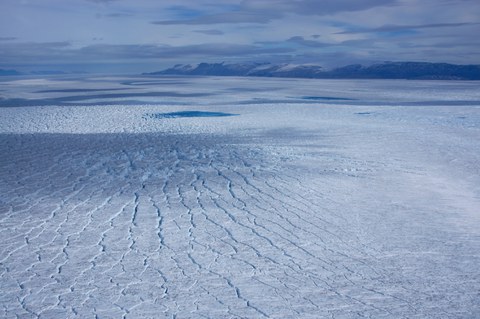Feb 09, 2021
Pressure relief lifts the earth's crust: How changes in the ice mass deform the earth
The Nioghalvfjerdsbræ lies at 79 ° north latitude. Researchers from the TU Dresden and the TU Denmark obtained remarkable results on the changes in the regional ice masses between 2010 and 2017 in the area of this huge outflow glacier, which forms a more than 70 km long floating glacier tongue, in the area of north-east Greenland Maria Kappelsberger's group published the study in the Journal of Geophysical Research: Earth Surface (JGR).
Novel combination of satellite processes
The analysis is based on measurements at a total of 17 stations in Northeast Greenland, where precise position data is collected using GNSS (global navigation satellite system for determining position). To evaluate the data, the researchers used a new type of combination of different satellite processes that not only include the ice sheet but also the peripheral glaciers and ice caps. In this way, they came to conclusions about the relationship between loss of ice mass and the rate of deformation of the earth: if the ice disappears and exerts less pressure on the elastic earth's crust, it deforms and lifts itself. This shapes the development of the sea level. "Our study provides important insights into the interaction between ice mass changes and solid earth in northeast Greenland," says Dr. Mirko Scheinert, project manager at the professorship for geodetic earth system research.
Reliable estimates
233 billion tons of ice mass are lost in the whole of Greenland every year - this corresponds to about 0.63 per thousand of the total Greenland ice mass over the seven years under consideration. If you distribute this released meltwater evenly over the area of Germany, you would get a layer of water about 4.6 meters thick. The resulting effects of the earth's crust can be described by modeling the glacial-isostatic compensation processes (GIA). The challenge here is to better grasp the complexity of the processes and interactions. The method used in the study enables a refined evaluation of the GIA modeling and thus an improved estimate of the rate of change in ice mass.
Information for journalists:
Dr. Mirko Scheinert
Tel. +49 351 463-33683

